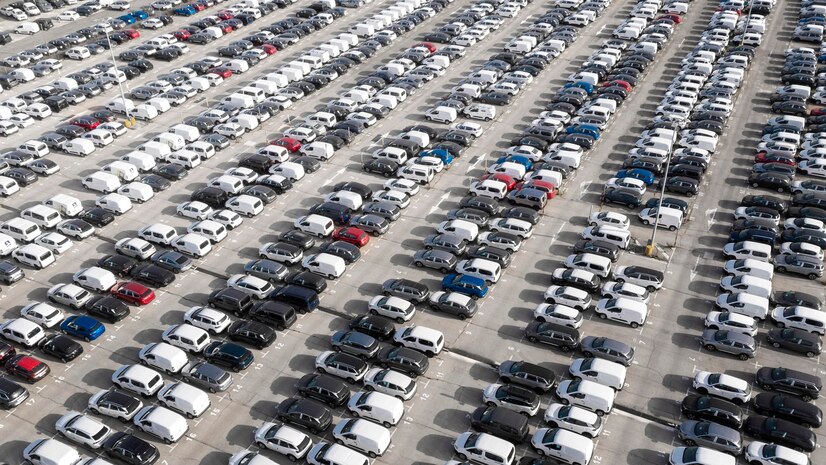The culture of car ownership across various countries presents exciting facts about how users respond to the concept of personal means of transport. Approximately 18% of the goal population currently has vehicular possessions, corresponding to around 1.4 billion automobiles. This figure indicates the geographical variations in the economic activities, cultural practices, and infrastructure regarding car ownership.
Car ownership in developed nations is a requirement as it typically supports work/school and travel activities. On the other hand, developing countries may see higher ownership rates in the future as economies grow and more infrastructure is built.
In this informative blog we will have a look on the statistics of percentage of car owners in the world.
Global Car Ownership: A Snapshot
Car ownership around the world is a complicated and changing picture. The number of car owners in different regions is influenced by various factors, including income levels, urbanization, infrastructure, and personal preferences. Although there is an overall increase in car ownership, the distribution of the population in terms of car ownership differs largely across countries—a trend that depicts economic progress as well as growth in mobility patterns.
According to the most recent information, at least 18% of people in the world own a car. However, there is a stark difference in this percentage between developed and developing countries. It is an ordinary thing for citizens of developed countries to possess cars, while in most developing countries, cars are largely seen as luxury items.
Car Ownership in Advanced Economies
The statistics on the rate of car ownership in various countries classify developed countries as having a consistently higher vehicle per capita. Because suburbs tend to be unreasonably spread out for many people, a car is considered a necessity in most of these countries, especially where public transportation is inadequate or non-existent. The below data shows trends in car ownership in some of the key developed countries:
United States
About 91% of all U.S. households own at least one car, as considering the number of people, the U.S. has one of the highest ratios in the distribution of vehicles, at nearly 0.88 cars for every individual.
There has been a car culture for as the US has existed as a country because of the distances it spans, people living away from towns, and little public transport in most locations.
European Union
Generally, the car ownership rate in the European Union is 60 percent. However, individual countries within the EU show significant variation. In Germany around 82% of households have at least one car. While in Italy households car ownership levels are high about 85% of them owning a vehicle.

Households own vehicles, which is approximately 60 percent of the total in Japan. Nonetheless, that averages out as there are places such as Tokyo that have high levels of population density where people and transportation tend to be more concentrated. In relation to rural settings, car ownership is much more regional.
In Australia and Canada, car rates are similar to the US, somewhere between 75 and 85 percent. Long distances between cities and the denial of the use of public transport in more regions make it mandatory to have a vehicle.
What percentage of Cars owners In Developing Countries
Though vehicle ownership is still low in developing countries or developing countries, the trend is up since economic expansion, increasing standard of living, and better infrastructure development promote private vehicle ownership. This is the case with the key developing regions:
In China has seen a flood of cars in the past two decades. In 2023, an estimate of about 20% of Chinese households owned a car, and this number is bound to increase with the expanding middle class.
Regarding basic means of transport for the people, car ownership is highly concentrated in urban areas, whereas rural areas still largely rely on public means of transport or two-wheelers for commuting.
When it comes to car ownership rate in Africa the number of car owners is very low. On average, only 5 percent of households own a car. But South Africa’s car ownership ratio is approximately 45%. Economic Barriers: Many Africans do not own cars because the price of a car is very high in comparison to their average incomes, while many roads in the region are still inadequately developed.
The trends are not the same in Latin America. In Brazil, only around 25% of the households own a car, while in Argentina, the figure seems to be slightly higher at 30%. Countries such as Venezuela have also seen a decline in car ownership levels over the last decades due to political turbulences. Growing Markets: The growth of disposable income will more than likely lead to growth in the automotive sector in Latin America as markets regain their stability.
Factors Affecting Car Ownership Across the World
Car ownership levels vary from one part of the world to another as a result of the following factors:
Economic Growth
Car ownership is likely to increase with economic growth. In countries with developed manufacturing industries and high incomes, more people tend to buy cars. This is true in China and India, where rapid economic growth is causing a boom in the number of new car buyers.
Urbanization
Urbanization has a dual effect on car ownership. For example, in developed markets such as the U.S. and Australia, the very development of the suburbs further reinforces car usage as public transport systems are lacking. On the other hand, massive cities like Tokyo, New York, or London are losing the car with their useable public transport systems.


Infrastructure
The country’s road infrastructure also determines the level of car ownership. In countries like Germany and the U.S. with available roads and good road networks, it is easy to own vehicles. In regions like parts of Africa or Southeast Asia, where roads are poor or not many highways are available, it is less likely that people will own cars.
Government Policies
Car ownership is also ensured or blocked through various government policies. For example, tax incentives and subsidies for electric vehicle purchases are common in certain countries, encouraging people to buy these and many other cars.
Fuel costs can be a significant factor in car ownership affordability. Countries with high fuel prices may not allow many inhabitants to own cars because of high operational costs.
Car Ownership Transformation: The Introduction of Electric Vehicles
The worldwide trend of switching to electric vehicles (EVs) has also brought about changes in car ownership demographics. The adoption of electric vehicles is expected to increase in Europe, China, and the US, owing to government support and a better understanding of the environment.
Europe
With more than half of the market for newly purchased cars consisting of electric ones, Norway leads the globe in regard to the attachment of Electric Cars. Other European nations, such as Germany, the Netherlands, and Sweden, are also enjoying a surge in the ownership of electric vehicles.
China
In 2023, China by far the largest county by number of inhabitants and the most prominent vehicle market, has over 5 million electric cars on the roads. This is a result of the government’s encouragement for a less polluting mode of transport.
United States
In the United States, approximately 6 percent of nationally purchased automobiles are electric, with some states like California being ahead due to emission rules and response inducements.
It is projected that over the next several years, EVs will also gain in popularity and wear out toward conventional IC engines, which make them ever more powerful.
Future Predictions for Global Car Ownership
There is a rising global trend of car ownership, and this trend is insistent, especially in developing countries. However, such growth may be tempered in developed nations for the following reasons:
Ride-sharing and Car-Sharing
It has become famous for the younger generation to use transportation services like Uber and Lyft instead of owning a personal car. Car-sharing has similar effects in urban areas.

Autonomous Vehicles
Ownership patterns might change in the not-so-distant future as more and more people consider the benefits of smart transport solutions. As cities see the increasing popularization of smart transport, fewer families might think that owning a private auto is the most productive way to solve certain transport needs.

Environmental Concerns
Governments could seriously attempt to limit the number of owners of personal cars and further utilize these wide-scale changes in society to interfere with car culture.
These developments notwithstanding, it appears that very good motor vehicles will dominate as means of transport worldwide, especially within regions that are deficient in public transport development and facilities.


What Country has the Highest Percentage of Cars in the World
According to the latest statistics, the most car-dense region in the world is the tiny Mediterranean Republic of San Marino. It has around 1263 cars for every 1000 people, making it the leader in countries with obscenely high vehicle per capita ratios.
The combination of San Marino’s small size and wealth also helps enhance this vehicle ownership level since almost every person in the country has at least one vehicle. Compared to other large countries, the U.S. stands to be among the very highs depending on car ownership at 837 cars per 1000 people as it can be assumed that most people use their cars as a means of transport.

What Country Has the Least Number of Cars Per Capita
The landlocked East African country of Gabri Nduru has one of the lowest number of car owners in the entire world. For every 1,000 people, there are less than 5 cars, thereby making the percentage of car owners very low. The underlying factors for such trends are more of a socioeconomic nature. Thus, the central segment of the population does not acquire personal means of transport and utilizes bicycles, motorcycles, or public transportation instead. The lack of cars in the country is also accounted for by poor vehicle roads and the high price of vehicle imports. Such trends can be observed in the other poorer regions of the African continent and South East Asia.
Conclusion
Car ownership differs significantly from one country to another depending on several factors, such as income levels and culture. Even though developed economies such as the U.S., Germany, and Japan have high rates of car ownership, many countries that are growing are still at a stage where they are experiencing linear growth as income levels go up and infrastructure gets better. Innovations like electric cars will also play a role in car ownership trends around the world. As we look to the future, the equilibrium of owning cars, having other forms of mobility, and environmental care will determine how mobility will evolve for every place on the globe.
